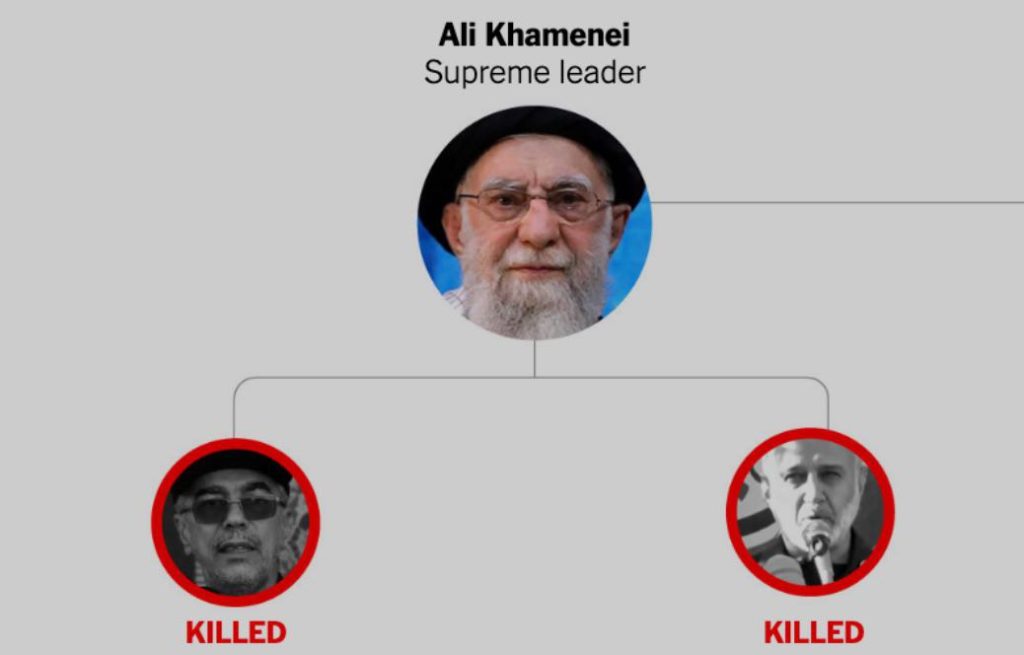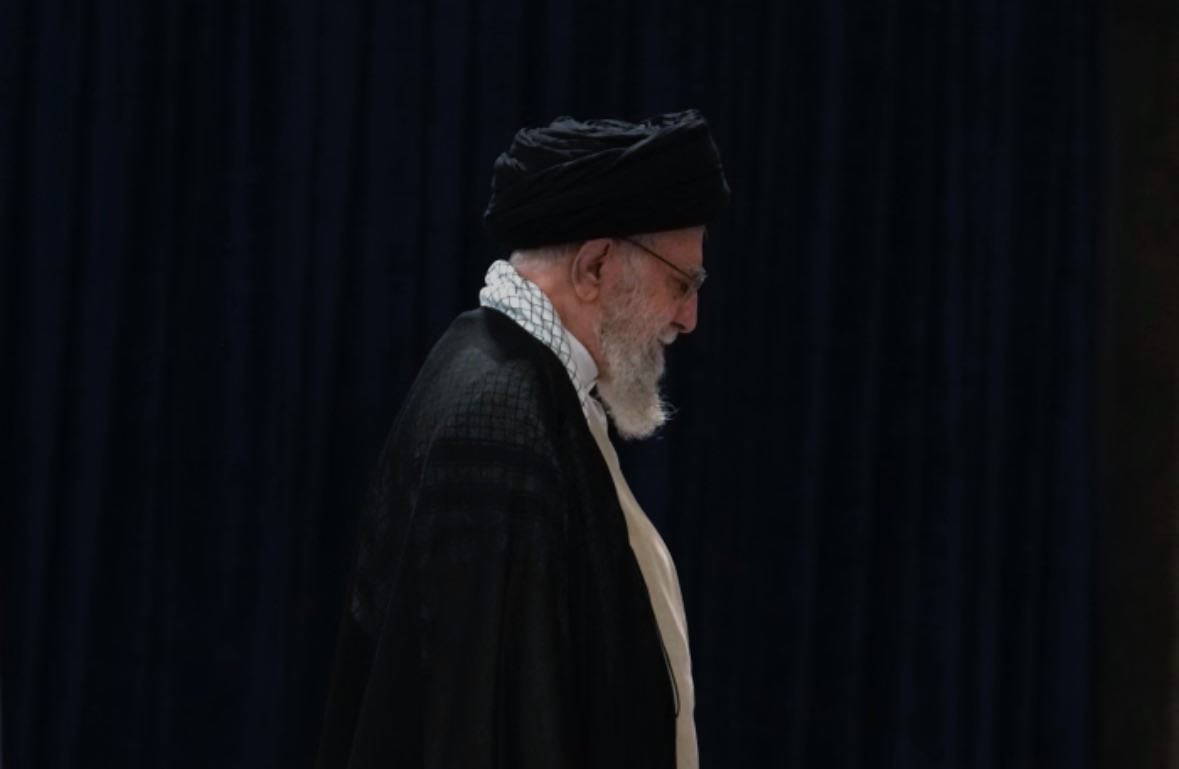Khamenei was the target, an unfinished narrative of elimination
Khamenei was the target, an unfinished narrative of elimination
According to the IranGate news agency, the newly released documentary ’12 Days in June’ aired on Israel’s Channel 13 unveils unprecedented details about the 12-day war between Israel and Iran, from top-secret meetings in Jerusalem’s bunkers to joint operations with the US to bomb Iran’s Fordow nuclear facilities.
This documentary, while narrating the airstrikes, ground operations, and assassination of scientists moment by moment, provides an unprecedented look at the decision-making process, the pivotal role of Mossad, and the diplomatic red lines within a complex regional conflict.
A narrative of a planned war with Iran
The newly released documentary ’12 Days in June’ from Israel’s Channel 13 offers an unprecedented and candid depiction of the political, military, and security decision-making behind a complex 12-day operation against Iran.
Focusing on secret meetings of Israeli leaders, deceptive operations, precise attacks, and the key role of the United States in destroying part of Iran’s nuclear infrastructure, this film attempts to document one of the most contentious regional conflicts—a narrative perceived as both documenting decision-making and doubted by some observers as recounting the entire reality of those twelve days.
Beginning in the bunker: the approval of war and the Prime Minister’s prayer
According to documents and interviews included in this documentary, the main meeting of Israel’s security cabinet on June 12 takes place in a bunker on the outskirts of Jerusalem, where a large-scale military operation is approved for the following dawn.
The objectives are clear: a structural blow to Iran’s entire nuclear chain and a significant reduction in its missile capabilities.
During part of the meeting, a senior officer explicitly states that only America can destroy Fordow. The session ends with a rarely heard phrase from Benjamin Netanyahu: ‘May God help us’—a phrase highlighted in the documentary as a sign of the weight of the decisions on the brink of war.
Deception operations: from the Prime Minister’s son’s wedding to a post by an American diplomat
Simultaneously with preparations, the deception machine is set in motion. A cover meeting about hostages, signaling normalcy, and even stories of weekend getaways and the Prime Minister’s son’s wedding were part of the effort to mislead the Iranian side.
A noteworthy point is a post by Mike Huckabee, the then U.S. ambassador to Israel, on the platform X (formerly Twitter) an hour before the attack, while according to one of the commanders, these moments were a time to completely avoid sending signals.
The first nights: neutralizing air defenses and targeting masterminds
On the first night, the focus is on Iran’s air defense. S-300 systems and other strategic equipment are targeted, and industries related to missile production are heavily bombed.
On the second night, according to Israeli commanders, dozens of other defense systems are destroyed, and aircraft penetrate up to the outskirts of Tehran—a stage referred to in the documentary as ‘opening the sky.’
Alongside infrastructure targets, targeted assassinations are also on the agenda. In a television interview, Netanyahu emphasizes that his main goal was to strike at the scientific leadership of Iran’s nuclear program: ‘Bring me the scientists.’
According to the documentary, at the end of the first night, nine Iranian scientists were killed, four of whom are classified in the top tier. At the peak of this operation, the IRGC Aerospace Command and several other officers are trapped and simultaneously targeted in a secret headquarters in Tehran, an operation known in the command room as ‘The Red Wedding,’ derived from one of the bloodiest scenes in the series Game of Thrones.
Iran’s response: from predictions to reality
Before the operation began, Israeli commanders predicted the loss of between three to five aircraft in the first 48 hours. The mission durations were estimated to be about one and a half hours, with pilot recovery exercises and emergency scenarios pre-designed.
From Iran’s side, Israel’s initial estimate was the launch of 1,400 to 1,500 missiles during the war, but according to the documentary, this number was actually limited to about 530 missiles.
Nevertheless, significant damage was recorded in cities like Bat Yam, including the destruction of parts of a 14-story building and human casualties even in shelters.
The plot to assassinate Iran’s leader: a plan on the table without a chance for execution

In part of the documentary, the topic of directly targeting Ayatollah Ali Khamenei, the leader of the Islamic Republic, is clearly raised.
According to one informed individual, this option was considered during the planning of operations, but due to Khamenei’s relocation to a safe place and his disconnection from the outside world, no real operational opportunity was available.
This discussion had previously been raised by Israeli officials, including Israel Katz, the Defense Minister. The documentary emphasizes that although regime change was not the declared goal, some hoped the result of the operation would weaken the public atmosphere and perhaps bring changes within Iran.
The Fordow knot and the crucial intervention of America
At the heart of Israel’s challenges was the Fordow enrichment facility, a deep center within the mountain that could not be destroyed without the use of American bunker-busting bombs. According to the film’s narrative, on the ninth day, after days of hesitation, America agrees to attack Fordow, and the next day, three bombs land on this center.
Subsequently, Natanz and Isfahan are also targeted.
Donald Trump described this action as a historic blow; however, some independent assessments emphasize that the Fordow facility was not completely destroyed and was only halted for a few months.
A calculated end: low profit, high risk
After the attack on Fordow, the discussion of ending military operations is seriously raised in Israel’s security cabinet.
The prevailing analysis was that key objectives were achieved, but the risk of continuing the conflict—both for pilots and on the home front—had increased. The final decision was to announce the end of operations with America’s initiative to preserve its strategic dimensions.
On the night before the ceasefire announcement, Iran inadvertently violates it. In response, Israeli fighters advance to the brink of bombing Tehran again, but at the direct request of the US President, the operation is halted, and only one radar is targeted.
According to Abbas Araghchi, a misunderstanding in the timing of the ceasefire occurred between Tehran and Washington. His direct contact with Trump’s special envoy ultimately prevented Israel’s continued response.
Invisible forces: ground warfare deep in Iran
Alongside the air operations, the documentary reveals the presence of foreign agents on Iranian soil.
According to Channel 13’s report, Mossad had activated about 100 agents inside Iran before the operation began. These individuals played a role in destroying missile launchers and air defense systems using systems secretly smuggled into Iran.
Eyal Zamir, the Chief of Staff of the Israeli Army, has confirmed the presence of special forces deep within Iran’s territory.
Additionally, a network of human resources for gathering information about Iran’s nuclear program had been established by Mossad for years.
The legacy of a short war, a long shadow
The documentary ’12 Days in June’ is more than just a visual narrative of a limited war; it is an effort to document a method of modern warfare—a blend of precision strikes, intelligence infiltration, psychological operations, international cooperation, and precise control of public opinion in conditions where the front lines are more invisible than ever.
The film, alongside mapping out Israel’s operational plan, clearly reflects the complexity of decision-making in preemptive wars.
From the bunkers of Jerusalem to the corridors of Tehran’s sky, from security cabinet meetings to Mossad’s penetration deep into Iran’s territory, this documentary showcases a level of readiness, anxiety, deception, and calculation rarely recorded in Middle Eastern conflicts.
On the other hand, this narrative is also entangled in an internal contradiction. While emphasizing the effectiveness of the operations, it acknowledges that goals such as the complete destruction of the Fordow facilities or the overthrow of Iran’s political system were not only unachieved but also unlikely to be practically realized from the outset.
As a result, the gap between declared objectives, real outcomes, and media portrayal becomes part of the film’s message.
Furthermore, the prominent presence of the United States—both as a military partner and a political guarantor of the conflict’s end—clearly shows that regional conflicts, even in the short term, cannot be guided without the considerations of international players.
The attack on Fordow was not possible without American bunker-busting bombs, and the end of the war could not be achieved without Washington’s green light.
Another important point is the documentary’s emphasis on the intelligence war. Mossad’s operations on Iranian soil, the network of human resources, the control of advanced equipment by non-Israeli forces, and even the precise timing of attacks to simultaneously assassinate several commanders all indicate the high importance of intelligence in shaping a modern war—a war whose main field is designed in the mind and command rooms before bombing.
Ultimately, ’12 Days in June’ is not just the narrative of a war but a reflection of a doctrine: preempting before the enemy acts, striking simultaneously at the brain and muscle, and calculatedly exiting the field before reaching the point of attrition.
But even at the peak of claimed successes, the film warns that threats are rebuildable and existential dangers are not easily eliminated—a message that perhaps more than anything reflects Israel’s deep understanding of the changing nature of war in the modern era.

